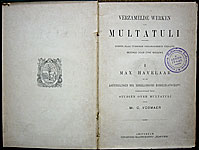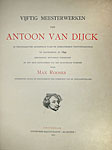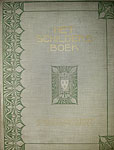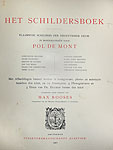Five Centuries of History of Elsevier in the National Library of Russia:
from Book-printing to an Information Provider
The book exhibition "Five Centuries of History of Elsevier in the NLR: from Book-printing to an Information Provider" was open at our library on 20 September as part of the celebrations of the Year of Elsevier in the National Library of Russia.
The exhibition features about 300 printed books in Russian and foreign languages, 100 titles of serials and periodicals on art and culture, socio-economic and political sciences, engineering and medicine from the collections of the NLR.
The Imperial Public Library, now the National Library of Russia, has collected publications of the celebrated publishing house since the late 18th century. Our library holdings currently contain more than 6 000 Elzevier volumes from the late 16th - early 18th centuries, of which 4 700 items are housed in the Rare Books Department. Subsequently, throughout its history, the National Library continued to accumulate the most important publications issued by this firm as well as other famous publishers that are now part of the Elsevier group: North Holland, Excerpta Medica, Pergamon Press, Mosby, Saunders, Academic Press etc. Publications of these companies have always been a priority for the NLR.
The history of the famous Dutch Elsevier press began in the 16th century, when in 1580, the Dutchman Lowys Elsevier (1583-1652) founded the House of Elzevir, a printing and publishing company. The Elsevier family produced books in large editions, often making them into a series of cheap pocket volums that were intended for the new reader, appeared in Holland in the 16 century. Nice and simple font for the small size publications, developed in their printing shop and called Elsevier, has been applied up to the present time. They introduced formats equal to one sixteenth and one twenty fourth the size of the full sheet, which were unusually small for that time. An especially interesting innovation of the family is one-twelfth size, which looks stretched out or elongated. It is simply referred to as the Elsevier format. The decrease in size led to the price reduction and contributed to the increase of editions. Not only feudal lords and the clergy, even the common people of modest means, the "third estate", could afford to buy books.
Contemporaries regarded it as a real revolution in the book market. In order to hold books, "the pockets for books" were invented for clothing. That is why, it is considered that Elsevier began the era of the pocket book.
The modern Elsevier company was established in 1880 by the Dutch bookseller Jacob George Robbers, who was rather a bibliophile than a businessman. Like the Elseviers, he also wanted to publish classics for those who are interested in them. In addition to the name, he adopted the original Elzevir printerÆs mark, stamping his new products with it. The emblem depicts a philosopher plucked grapes from a vine entwined around the trunk of an elm tree, under which is inscribed the motto Non Solus (Not Alone). The logo was first introduced by Isaac Elzevir, the son of Lowys, in 1620 in Leiden. There are several different interpretations of this picture: according to one of them, it symbolizes the close relationship between publisher and scholar. Publishers, like the elm tree, are needed to provide support for scholars, just as scholars, like the vine, are needed to produce fruit. Authors and publishers cannot do it alone and need each other: they are interdependent.
1880-1933
In the first fifty years of its existence from 1880 to 1933, Elsevier was a very small publisher, and its staff consisted of no more than ten people. It mostly published fiction, art albums, monographs on the history of the Dutch language and literature. The young companyÆs great success was obtaining the Dutch rights to Jules VerneÆs Illustrated Travels in 57 volumes.
The exhibition features a number of books issued by the Elsevier publishing house in that period. First, we would like to mention the ten volume collection of works by one of the leading Dutch writer Eduard Douwes Dekker / 1820 - 1887 /, better known by his pen name Multatuli / Verzamelde Werken van Multatuli. Vol. 1-10. Amsterdam, 1888-1889 /. One of his novels, "Max Havelaar", in which he denounced the colonial policies of the Netherlands, was proclaimed in 2002 by the Society for Dutch Literature as "the greatest piece of all time, written in Dutch".
In 1900 the publisher "Elsevier", the well-known Belgian art historian, curator of the Plantin-Moretus Museum Max Roose released an album Fifty Masterpieces of Anthony van Dyck in Photogravure: Selected from the Pictures Exhibited at Antwerp in 1899 / Rooses Max. Vijftig Meesterwerken van Antoon van Dijck in photogravure afgebeeld naar de schilderijen tentoongesteld te Antwerpen in 1899 /.
This edition includes reproductions of the paintings by the prominent Flemish artist, which were presented at the jubilee exhibition, held in Antwerp in 1899 and dedicated to the 300th anniversary of his birth. A picture from Hermitage collection was also displayed at this exhibition. It was a portrait of Philip, Lord Wharton, acquired by Russian Empress Catherine II. For us, this publication is interesting for another reason as well: the item, that kept at the National Library of Russia, was printed on Japanese paper, signed by the chairman of the exhibition committee and numbered. The NLR houses copy number five.
An equally gripping series is dedicated to the Flemish and Dutch painting of the 19th century. Four volumes of this fundamental and well-illustrated publication tell about the Dutch artists of that time and have the same name - Book on Artists. Dutch Painters of the Nineteenth Century in Studies of Contemporaries / Het Schildersboek. Nederlandische schilders der negentiende eeuw in monographieen door tijdgenooten uitgegeven onder toezicht van Max Rooses. Amsterdam, 1898-1900/. The fifth book of the series covers Flemish masters, and written by the famous Belgian writer and poet Charles Paul de Monte Book on Artists. Flemish Painters of the Nineteenth Century in the Monograph by Paul de Monte / Het Schildersboek. Vlaamsche schilders der negentiende eeuw in monographieen door Pol de Mont. Amsterdam, 1901/
1933-1970
In 1930 the company was among the first to translate German scientific texts and textbooks in English. In 1937, it published one of the first books in English - Organic Chemistry by the chemist Paul Karrer that was an English translation of the famous textbook Lehrbuch der Organischen Chemie / Karrer P. Organic Chemistry. 3th ed. New York-Amsterdam: Elsevier, 1947 /. In the same year, the scientist was awarded the Nobel Peace Prize for his research in the field of carotinoids, flavins and vitamins A and B2. Consequently, Elsevier has gained a reputation as a printing house, publishing scientific texts in English. The firm intended a further publication in English - Encyclopedia of Organic Chemistry which should have been contained articles by scientists from various countries. In this period, the publishing house moved toward the global level: it established an office in the United Kingdom in 1939. Another office was planned to open in America, but these plans were not carried out in the next 20 years. In May 1940, German troops crossed the border of the Netherlands. During the war, the work of the publishing house was actually stopped due to restrictions imposed by the Hitler regime, and because many scientists emigrated from Europe to the United States.
After the war, "brain drain" from West Germany to the United States and other countries continued. An intellectual landscape has changed. The main centre of scientific thought has moved from German to the United Kingdom and the United States. Elsevier, already being an international publisher, found its niche in the global market. The publisher had sufficient cultural potential, and besides that, it was located in the heart of Europe. Netherlands, with their history of scientific publications and geographical location, became an ideal base for a new stage in the development of international publishing.
In the postwar period, Elsevier developed a new area of publishing international scientific journals. In 1947, it introduced the first international scientific journal in the field of biochemistry and biophysics - Biochimica et Biophysica Acta (the NLR received it from 1947 (Vol.1) to 1997). And now it is one of the most respected publications of Elsevier.
In the 1950s, Elsevier and the other Dutch publishers ½North Holland╗ created a collection of major scientific journals: Ananlytica Chimica Acta (the NLR received it from 1947 (Vol.1) to 1973), Clinica Chimica Acta (the NLR received it from 1956 (Vol.1) to 1990), Wear (the NLR received it from 1957 (Vol.1) to 2005), Nuclear Physics (the NLR received it from 1956 (Vol.1) to 1992) and others. In 1961, the publisher opened a branch in the United Kingdom, and in 1962 - in the United States.
1970-1980
During this period, responding to a global economic crisis, a number of publishing companies of different countries joined forces. Thus a decade of mergers for Elsevier started. In 1970, it merged with North Holland. Next, in 1971, came a merger with Excerpta Medica, an international medical publisher in business since the 1940s. The most important product of this publishing house was EMBASE, the largest database of abstracts of medical publications in all languages. This database Elsevier launched in 1972 as its first project in the field of information technology. Elsevier, North Holland and Excerpta Medica were the first providers of international scientific and medical information.
The new publishing group acted successfully in the United States. In the 1970s, Elsevier launched the world-renowned journal Gastroenterology (since this year it has published also in Russian) and several other journals in the fields of clinical medicine, representing the works of major scientific associations of the United States. Whereas formerly such scientific journals as Brain Research, Artificial Intelligence, Nuclear Physics had circulations of 1 500-2 000, the companyÆs new medical society journals had circulations of 15 000 - 30 000. These large-scale journals sold advertising space to pharmaceutical companies, and Elsevier gained new opportunities that help built a reputation for the company as the world's leading publisher in the field of clinical medicine.
The company was expanding rapidly. Elsevier established its French office in Paris, published the journals of the renowned Institut Pasteur. Today, the French branch of the company is best known for its publications of Encyclopedie Medico-Chirurgicale, a multi-volume series that is subscribed to by over 100,000 French doctors. During this period, the company developed a "let a thousand flowers bloom" policy, encouraging many research electronic projects which later bore fruit.
As early as 1979, an new journal distribution project Adonis was developed. But it was too expensive for the time. Years later, this project was implemented in the most modern information technologies.





